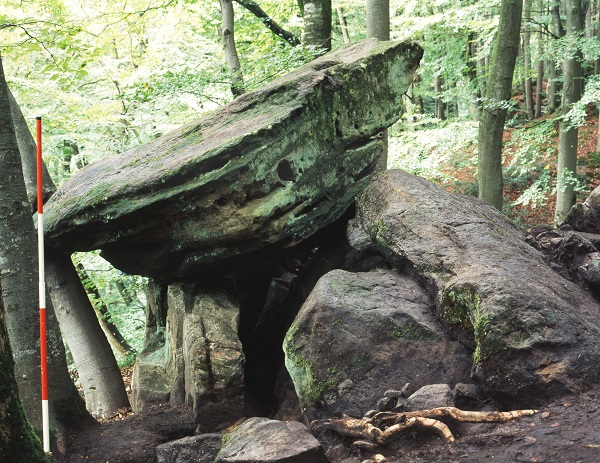 Photo of Neolithic burial site in Schnellert forest;
Credit: C. Weber via INRA
Photo of Neolithic burial site in Schnellert forest;
Credit: C. Weber via INRA
Chronicle.lu has teamed up with Luxembourg's National Institute for Archaeological Research (Institut national de recherches archéologiques - INRA) for a series of articles on archaeological digs and discoveries around the Grand Duchy.
The series explores digs spanning from prehistoric to Roman and medieval times, highlighting key finds and what they reveal about Luxembourg’s past. It also sheds light on the work of the INRA and its approach to archaeological and historical research.
The latest article in this series looks at a nearly 4,750-year-old Neolithic burial site in Berdorf.
An archaeological excavation led to the rediscovery of a burial site beneath a rock pile in the Mullerthal region. The bones of two individuals - an adult man and a child - were dated by carbon-14 to around 2700 BC.
In the Schnellert forest, on the right bank of the Black Ernz in Berdorf, a sandstone boulder has formed a kind of natural “dolmen”. This feature may have prompted people in the Late Neolithic period to bury two of their own here. Nicolas van Werveke first explored the site in 1908 (using the rudimentary methods of the time), revealing the remains of a human skeleton, which has since been lost.
A new archaeological excavation took place in 2000 under the direction of François Valotteau to resume the study of this rock mass. Extensive scraping and systematic sieving of the excavated material not only proved that this “dolmen” had been formed by a succession of landslides from the top of the slope, but also uncovered other human remains that had been missed in the previous excavation: several human bone remains (long bone fragments, short bones, teeth) were found in two sectors - some were found in place inside the pseudo-dolmen chamber, while others, dragged out by extraction, were collected outside.
The story continued when the bones discovered during the first excavation in 1908 were found in a crate in the former State Museum depot. This made it possible to complete the few remains found in 2000 and carry out a more precise anthropological study, led by Michel Toussaint. Two people were buried in this grave: an adult male aged between 30 and 45 years old, approximately 1.55 metres tall, and a boy around ten years old.
Carbon-14 dating places this burial around 2700 BC, situating it within a Corded Ware cultural horizon or in an early Campaniform facies (Bell Beaker culture), although no furniture remains associated with the anthropological evidence make it possible to determine this with certainty.








